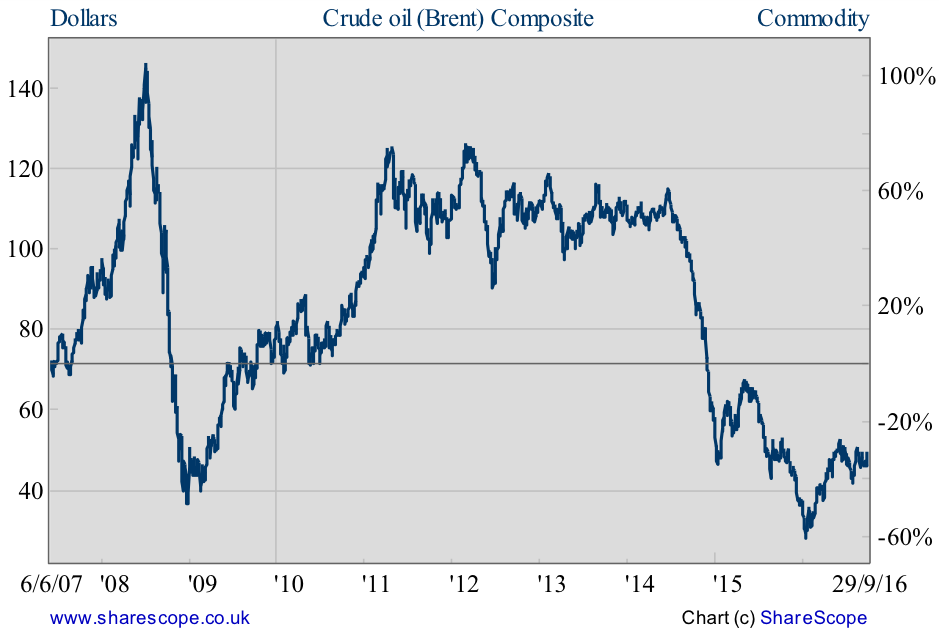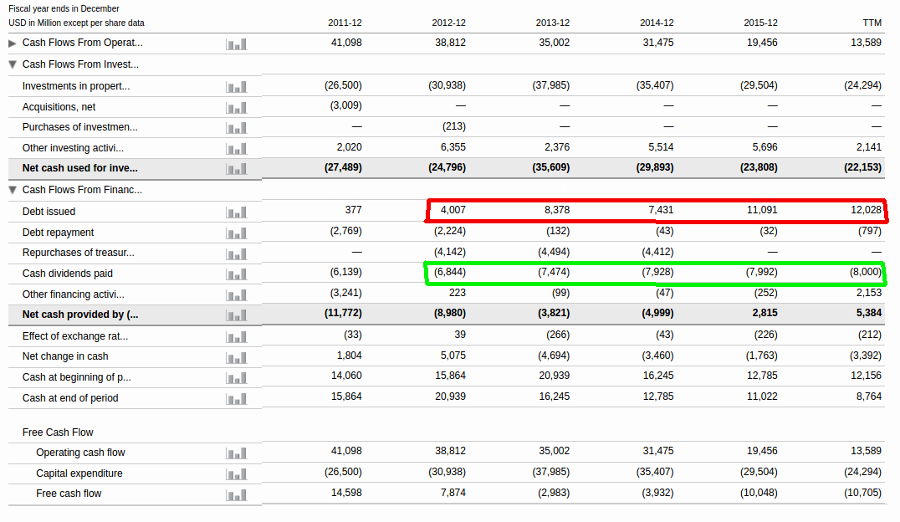Is OPEC’s deal credible and sustainable?

As readers are no doubt aware, OPEC recently agreed a production cut from its August output of 33.2 mb/d (million barrels per day) to a new target of between 32.5 mb/d to 33.0 mb/d. With OECD oil inventories expected at 3,090 million barrels by the end of this year, the agreed production cut is unlikely to have any real impact in the market. For now, investors seem enthusiastic about the “promised” cut, but as life moves on from the Wall Street reaction to the very real challenges facing Main Street, such enthusiasm may just peter out.
I must admit that I’m really not enthusiastic about oil and/or the sector in general for the coming years. While there are certainly some gems, the sector will most likely experience a long period of difficulties, as a whole. Oil prices are no longer the result of OPEC’s actions but rather a complex determination that is partially floored by OPEC’s desires but, at the same time, capped by an entire army of shale oil companies anxiously waiting for their opportunity to shine. Last Wednesday’s agreement is not even the final deal but just the purchase of an option on oil prices that can be exercised at the end of November. Until then, any oil price moves are just the result of fancy Wall Street reactions to immaterial action.
There are so many ‘ifs’ related to the oil market that I don’t even know where to begin. But the salient point is that oil stockpiles are brimming the world over. The OECD is expected to have oil inventories of 3,090 mb by the end of this year. That number comes on top of 2,997 mb in 2015 and 2,721 mb in 2014. Global demand is estimated by the U.S. Energy Information Administration (EIA) at 95.36 mb/d while total production is expected at 96.20 mb/d this year. While the daily surplus isn’t huge, stockpiles are, which requires a significant contraction in production (or increase in demand) for prices to move significantly higher. OPEC’s proposed deal seems insignificant, to say the least.
But let’s say this deal is enough for now and the cartel can reach a few future deals for further cuts if needed. Will they put in practice what they agreed upon on Wednesday? The next meeting comes at the end of November. What will happen in the meantime? Will everyone try to pump as much as it can? Iraq is a problem, Iran is another. Russia said that it may be willing to cut production, but that will only happen after the country sees some moves from OPEC. Saudi Arabia may have to lead the group but it will have to watch its back every time because the incentive to pump more oil than first agreed is great for all members, in particular while they believe that no one would notice. All this means that we need to wait until the end of November to see whether Wednesday’s promises are going to materialise or are just a vain attempt to manage the market verbally, as central banks often attempt to do in their particular field.
Another point to make concerns the relative strength of OPEC in the world’s oil market, which isn’t as it used to be. Even in the case that OPEC succeeds in cutting output, that doesn’t necessarily mean global oil production will decrease. OPEC will produce less; but that hole may well be filled by the U.S. shale oil industry. The shale oil industry is a thorn in the side of the Saudis. The big drop in oil prices in the last few years from the $100s to the $30s, certainly put many shale oil companies out of business – but it also contributed to increase the efficiency in the industry. The surviving companies are today more efficient than ever and can pump oil at lower prices than they could a few years ago. If a production cut leads to higher oil prices, these companies will happily replace OPEC’s output with their own, which will cap any upside price potential. Another cap on oil prices comes from technology advances in renewable energies. While OPEC kept prices high for many years, the world has been working on new, more efficient, and cheaper energy sources. Higher prices just accelerate the process of replacing oil.
Another problem comes in the form of Janet Yellen. The FED’s chairwomen will likely push for an interest rate hike by December, which will have a negative impact on global demand. OPEC should be prepared to do whatever it takes – that is, to absorb oil as needed, just as central banks injected liquidity when necessary during the crisis. But is OPEC prepared for that? I don’t think so.
In the past, oil prices hit very high levels, in particular in the pre financial-crisis period when oil peaked at $145 on July 2008. But the Lehman Brothers collapse and the quick downfall of pretty much everything led to a free fall in oil prices to a level of $36.50 by the end of that same year. The actions pursued by the FED, injecting massive amounts of liquidity in the aftermath of the crisis, helped improve global demand and pushed oil prices higher again, this time peaking at $125 in April 2011. But after hitting that level, oil started trading sideways for the next three years, until entering a new slump that led prices down to $50 in 2015. No real recovery has occurred since then and the maximum price oil was able to reach was $65 in June 2015. The price ended up retreating once again, this time to a multi-year low at $28 in January of this year. Since January, prices have been on the rise again but unable to break above $50. In my view this up-and-down game will continue, but with its centre being rebased every year to a lower midpoint. Low demand and oil price cuts push prices up, but an ever more efficient shale-oil industry pushes them down. For this reason, I’m still a seller of oil at $50.

In a side note, allow me to add a few words about oil majors like Chevron. These companies have strong balance sheets, with plenty of assets to deplete for many, many years. But they are currently in trouble and adopting unsustainable policies. Look at the following cash flow statement from Chevron. Do you notice the problem?

Because of lower oil prices, profits at the company are on the decline, which has led cash flows from operations lower. With the company unable to reduce its capex by much, the only reasonable way to finance the deteriorating cash flow would be to cut dividends. However, while profits have been declining, dividends increased from $6.8 billion in 2012 to $8.0 billion in 2015, rising every year. As such an increase wasn’t backed by profits, they had to finance dividend disbursements with debt. Chevron raised $4.0 billion in 2012, and an additional $8.4 billion, $7.4 billion and $11.1 billion in 2013, 2014 and 2015 respectively.
My question is simple: What will happen if oil prices remain at these levels or deteriorate further?
My answer is straightforward: Some of these majors will enter difficulties. Avoid these oil majors that are paying dividends by issuing debt, due to its unsustainable nature.
Comments (0)